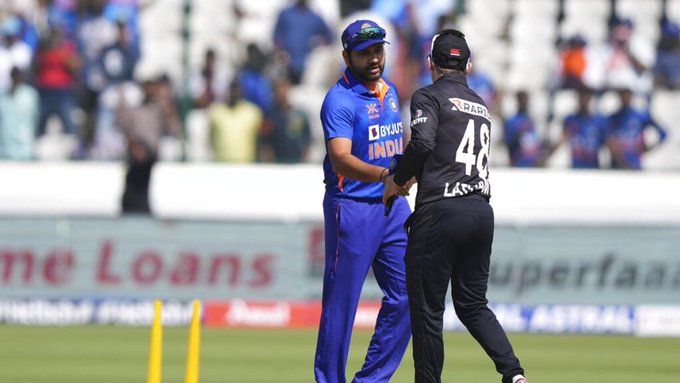
Bharath Ramaraj from Bengaluru
Before taking the field, New Zealand’s players perhaps end up by-hearting the phrase, ‘control the controllables’. In the World Cup game against Sri Lanka, we saw enough of New Zealand’s simple yet successful template, be it bowling, batting or the decision-making process. For starters, New Zealand had to defeat Sri Lanka in order to all but seal their entry into the semi-finals. First of the boxes was ticked with New Zealand registering a thumping win.
There was another small box to be ticked — improving the net run-rate by a considerable margin. New Zealand didn’t just better it but more than doubled it at the end of the game. Basically, Pakistan, their nearest challengers, now have to pull off a jailbreak to qualify for the last-four. This is an overview of New Zealand’s efficiency at the macro-level. But we have to dig deeper and sift through various nuts and bolts of the New Zealand set-up to analyse the template at a micro-level.
It is imperative that the opening bowlers lay down a marker in a crucial game. Trent Boult and his partner-in-crime for many years, Tim Southee, certainly did that. In the first five overs, only three deliveries were shorter than a good length. The result of the pair’s intent to search for wickets was Sri Lanka slipping to 34 for 3. As the wickets kept tumbling, Kusal Perera blazed his way to a 22-ball 50. Kane Williamson, however, didn’t press the panic button and led the side with a calm countenance.
Perhaps he knew Perera was chancing his arm way too many times and a wicket was around the corner. Soon, Lockie Ferguson lured Perera into playing a lofted shot with a fuller length delivery that was bowled away from the southpaw’s hitting zone. All that Perera could do was spoon a catch to the fielder stationed at covers.
Mitchel Santner took over from the pace trio by spinning a web around the Sri Lankan batters. Santner’s bowling may not be a connoisseur’s dream of cricketing heaven, but with subtle changes of length, pace and use of the crease, he has turned into New Zealand’s bankable weapon.
The bowlers had given New Zealand a sure-footed security by cleaning up Sri Lanka for a paltry total. Now it was time for the batters to steer the side to the desired outcome. New Zealand did lose five wickets before crossing the finish line, but the think-tank also would have kept one eye on the NRR situation. Eventually, the batting unit got the job done by overhauling the target with plenty of overs to spare.
Rachin Ravindra was one of the three New Zealand batters who crossed the 40-run mark. By now, Ravindra seems to have become everyone’s favourite at the Chinnaswamy. While fielding at third man, his every movement seemed to be noticed and cheered.
Even when he stretched his arms, chants of “Rachin, Rachin” filled across the stadium. And that extended to his bowling and batting as well. Such is the adoration for Ravindra that he could very well think of buying a plot in Bengaluru long after he retires and make the city his second home.
Devon Conway, who hasn’t been in the best of form since accruing a hundred in the opening fixture of the World Cup, helped himself to a 34-ball 42. Daryl Mitchell then put on a show of willowy fireworks.
On the day, more than Sri Lanka’s rather insipid show, an external factor could have preyed on the New Zealand side’s worry lines — rain. The unpredictable weather of Bengaluru was kind enough on them as just 15 minutes before the toss, a bit of sunshine broke through a few angry-looking clouds, and it stayed that way for most of the afternoon and evening.
So, looking ahead, is there something that the New Zealand camp would mull upon? You could point to New Zealand’s catch efficiency, which is around 70 per cent in the tournament. The only side that has a worse catch efficiency is their opponent for the day, Sri Lanka. Today, too, New Zealand fluffed a couple of chances, including one of the dangerous Perera. Luckily, it didn’t prove to be costly.
The story of New Zealand cricket is intertwined with the theme of it being a country of just 5,242,942 people. As Mitchell said in one of the press conferences, “For us, it’s just showing up and playing the Black Cap style of cricket that we want to play. I’m sure if we can control those little things and do them for long periods of time, then we’ll go a long way to getting some outcomes which we want.
“We’re a small country, down the bottom of the Earth, and for us it’s fighting for every ball, chasing every ball to the boundary, and doing the little things that we can control. The big stuff will look after itself if we’re clear on our roles.”
On a balmy evening at the Chinnaswamy, it was yet again simple recipes rather than exotic dishes that took New Zealand ever closer to solving the semi-final puzzle.



